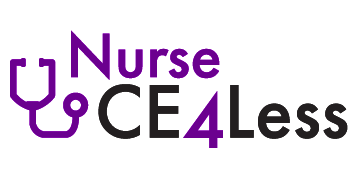Course Summary
Anaphylaxis has been described as a systemic hypersensitivity reaction to antigens such as food or environmental exposures with rapid onset of life-threatening airway and circulatory symptoms. Medication and/or emergency interventions will need to be administered by the interdisciplinary health team when anaphylaxis is diagnosed in a healthcare setting. In rare cases, anaphylaxis can lead to death, making it imperative that health teams be prepared to intervene quickly when signs and symptoms of anaphylaxis occur. Also health team members have a key role in the education of at risk individuals and their families, and of the general public to increase community awareness of the variable risk factors, recognition and treatment of anaphylaxis, and of ways to prevent its occurrence. In the case of exposure to products considered potentially allergenic in a healthcare center, such as latex and radiographic contrast products, having an evidence-based policy for the health team to follow and a screening tool in place to identify at risk individuals could make the difference between a life-saving intervention and a catastrophic outcome. Research and a case study of anaphylaxis will be discussed.
Course Format
Homestudy
Course Syllabus
- I. Introduction
- II. Epidemiology of Anaphylaxis
- III. Pathophysiology of Anaphylaxis
- 1. Antigen Exposure
- 2. Antibody Formation and Sensitization
- 3. Re-exposure and Anaphylaxis
- IV. Causes of Anaphylaxis
- V. Signs and Symptoms of Anaphylaxis
- VI. Treatment of Anaphylaxis
- 1. Immediate Treatment: Hypotension and Airway Obstruction
- 2. Epinephrine
- 3. Antihistamines and Glucocorticoids
- 4. Bronchodilators
- 5. Vasopressors
- 6. Glucagon
- 7. Observation Time
- VII. Latex, Penicillin, and Radiographic Contrast Allergy
- 1. Latex Allergy
- 2. Penicillin-Cephalosporin Cross-Reactivity
- 3. Radiographic Contrast Allergy
- VIII. Case Study: Latex Allergy
- IX. Summary
Author
Dana Bartlett, RN, BSN, MSN, MA, CSPI
Dana Bartlett is a professional nurse and author. His clinical experience includes 16 years of ICU and ER experience and over 27 years as a poison control center information specialist. Dana has published numerous CE and journal articles, written NCLEX material, textbook chapters, and more than 100 online CE articles, and done editing and reviewing for publishers such as Elsevier, Lippincott, and Thieme. He has written widely on the subject of toxicology and was a contributing editor, toxicology section, for Critical Care Nurse journal. He is currently employed at the Connecticut Poison Control Center. He lives in Wappingers Falls, NY.


